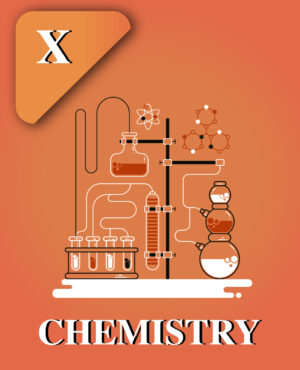About the Course
Comprehensive Biology for Class XII has been revised and updated as per the latest syllabus prescribed by CBSE. The main objective of this book is to provide the students a complete textbook as well as a reference book in such a way that they can grasp the subject with more clarity.
Sincere attempts have been made to make the subject content thorough, current, and condensed. Every effort has been made to keep the language straightforward and the presentation organized. Diagrams that are clear and instructive have been added to support the text along with topicwise videos. While the fundamentals have received a lot of attention, every attempt has been made to provide recent material in sufficient detail so that the students will have a strong foundation for competitive exams and higher education.
There are headings and subheadings for each chapter. Questions based on the standards established by various Boards are placed after each section of a chapter. To give the students a rapid recap of the section, this has been done. A special collection of questions of all kinds, including those from the Exercise with Answers, Very Short Answer Type Questions with Answers, Multiple Choice Questions with Answers, Special Questions with Answers, and Additional Objective Questions with Answers, are available at the end of each chapter.
The current edition of course is really hoped to be even more beneficial assisting students in getting ready for both the Board and competitive exams. We will warmly accept constructive critique of the subject matter and worthwhile recommendations for further developing the course.
Learning Objectives
-
- overall holistic development of children studying the course.
- This course helps students to learn about many of the phenomena which they observe in their daily routine.
Requirements
-
- Refine their literary sensibility and enrich their aesthetic life through different literary genres.
- Student should have different language notice.
- Use a dictionary or Glossary available in the courses or library to access to difficult term.
Target Audience
-
- Who is learning Biology in class XII student preparing for their Boards.
- This course mainly targets the age student preparing for some of the govt. examination particularly for teaching field
1.Reproduction in Organisms
All creatures must reproduce in order to maintain their species. There are both asexual and sexual methods of reproduction. Asexual methods include binary fission, sporulation, budding, gemmule creation, fragmentation, and vegetative propagation in plants.
2.Sexual Reproduction in Flowering Plants
Pollination types, agencies, and examples; flower structure; male and female gametophyte development; outbreeding devices; pollen-pistil interaction; double fertilisation; Post-fertilization events include the growth of the endosperm and embryo, the development of the seed, and the production of fruit. Special modalities of apomixis, parthenocarpy, and polyembryony are all important, as are the significance of seed dispersal and fruit development.
3.Human Reproduction
The reproductive systems of both sexes; the microscopic anatomy of the testis and ovary; gametogenesis—spermatogenesis and oogenesis—menstrual cycle; fertilisation; embryo development up to blastocyst formation; implantation; pregnancy and placenta formation (a basic concept); parturition (a basic concept); and lactation (elementary idea)
4. Reproductive Health
Amniocentesis; infertility and assisted reproductive technologies (IVF, ZIFT, GIFT); need for reproductive health and prevention of Sexually Transmitted Diseases (STDs); birth control need and methods, contraception and medical termination of pregnancy (MTP); (elementary idea for general awareness).
5.Principles of Inheritance and Variation
Mendelian inheritance, deviations from Mendelism such as incomplete dominance, co-dominance, multiple alleles and the inheritance of blood groups, pleiotropy, the basic concept of polygenic inheritance, the chromosome theory of inheritance, and chromosomes and genes are all examples of heredity and variation. Human, avian, and honey bee sex determination; linkage and crossing over; sex-related inheritance of haemophilia and colour (ix) blindness; Thalassemia, chromosomal diseases in people, Down syndrome, Turner syndrome, and Klinefelter syndrome are examples of Mendelian disorders in people.
6.Molecular Basis of Inheritance
DNA fingerprinting, genome and human and rice genome projects, transcription, genetic code, translation, gene expression and control – lac operon, search for genetic material, DNA as genetic material, DNA packaging, DNA replication, and the central dogma.
7.Evolution
Origin of life; biological evolution and its supporting evidence (palaeontology, comparative anatomy, embryology, and molecular evidences); Darwin's contribution; modern synthetic theory of evolution; mechanism of evolution - variation (mutation and recombination) and natural selection with examples, types of natural selection; Gene flow and genetic drift; Hardy-principle; Weinberg's adaptive radiation; and human evolution.
8.Human Health and Diseases
Pathogens, parasites that cause human diseases like ringworm, filariasis, ascariasis, typhoid, pneumonia, and malaria, as well as methods for controlling them; Immunology fundamentals: cancer, HIV/AIDS, vaccinations; abuse of alcohol and drugs during adolescence
9. Strategies for Enhancement in Food Production
Plant breeding, tissue culture, single cell protein, biofortification, apiculture, and animal husbandry are improvements in food production.
10.Microbes in Human Welfare
In the manufacture of industrial goods, sewage treatment, energy production, and the employment of bacteria as biocontrol and biofertilizers in domestic food processing. Production and wise application of antibiotics.
11.Biotechnology - Principles and processes
Genetic Engineering (Recombinant DNA Technology).
12. Biotechnology and its Application
Biotechnology's use in medicine and agriculture includes the creation of human insulin and vaccines, stem cell research, gene therapy, genetically modified organisms such as Bt crops, transgenic animals, and problems with biosafety, biopiracy, and patents.
13.Organisms and Populations
Environment and organisms: Habitat and niche, population and ecological adaptations; interactions between populations (mutualism, competition, predation, parasitism); and characteristics of populations (growth, birth and death rates, age distribution).
14. Ecosystem
Ecosystems include patterns, components, productivity, decomposition, energy flow, pyramids of number, biomass, and energy, nutrient cycles (carbon and phosphorous), ecological succession, and ecological services like as carbon fixation, pollination, seed distribution, and oxygen release (in brief).
15.Biodiversity and its Conservation
The following terms are used to describe biodiversity: concept; patterns; relevance; loss of biodiversity; protection of biodiversity; hotspots; endangered species; extinction; Red Data Book; biosphere reserves; national parks; sanctuaries; and Ramsar sites.
16.Environmental Issues
Any one case study as a success story addressing environmental issues includes: air pollution and its control; water pollution and its control; agrochemicals and their effects; solid waste and radioactive waste management; greenhouse effect and climate change; ozone layer depletion; and deforestation (s).








Reviews